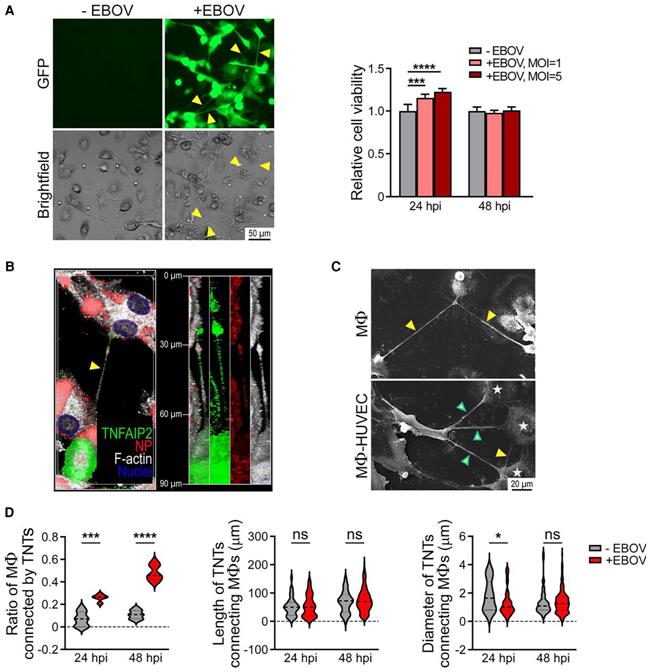Understanding how the virus spreads in the human body is critical to developing effective drugs and treatments to stop its spread. In a new study, researchers from the Texas Biomedical Research Institute have found that the Ebola virus (EBOV) can build and use intercellular tunnels to move from one cell to another, thereby evading treatment. Relevant research results were recently published in the Journal of Infectious Diseases, with the title of "Ebola Virus Uses Tunneling Nanotubes as an Alternate Route of Dissemination."
Dr. Olena Shtanko, corresponding author of the paper and assistant professor at Texas Biomedical Research Institute, said, "Our results show that EBOV can build a hiding place, hide, and then move to new cells to replicate."
Specifically, EBOV is creating something called tunneling nanotubes - dynamic connections between cells. It enables cells to communicate by exchanging particles over relatively long distances, up to 200 microns. While these structures have been shown to play a prominent role in promoting neurodegenerative diseases, cancer, HIV-1 and influenza, Dr. Shtanko is the first to study their role in spreading EBOV.
| Cat.No. | Product Name | Price |
|---|---|---|
| VLP-0007 | Ebola Virus-Like Particle | Inquiry |
"When we started this project a few years ago, we thought that the general pattern of EBOV infection spread — viral particles infect cells, start replicating, make new viral particles and are released into the body to infect neighboring cells — was a bit too simplistic," said Dr. Shtanko.
Using state-of-the-art in vivo scanning electron microscopy and high-resolution three-dimensional microscopy, Dr. Shtanko and her team found that EBOV infection of cells promotes the formation of tunnel nanotubes containing viral particles. The tunneling nanotubes then facilitate the transfer of these viral particles to other cells. Remarkably, triggering the formation of tunneling nanotubes does not require a complete virus, only a small part of the virus encoding a single protein.
View all Premade Virus Particles

Figure 1. EBOV infection triggers tunneling nanotubes formation. (Djurkovic M A, et al. 2023)
This occurs even with treatments that block EBOV. Dr. Shtanko explained, "Importantly, we observed that EBOV infection can spread in cultures treated with viral entry inhibitors, or drugs that block viral entry into cells."
Exactly how EBOV virus particles are transported through tunneling nanotubes remains an open question. Dr. Shtanko and her team plan to use advanced techniques such as laser microdissection, mass spectrometry, and low-abundance RNA sequencing to find answers. They will also explore whether related viruses, including the deadly Sudan virus and Marburg virus, use the same mechanism to spread infection. They will work with Texas Biomedical Research Institute professor Ricardo Carrion Jr. to analyze virus-containing tunneling nanotubes in animal model tissues.
Reference
Djurkovic M A, et al. Ebola virus uses tunneling nanotubes as an alternate route of dissemination. The Journal of Infectious Diseases, 2023, 228(Supplement_7): S522-S535.

